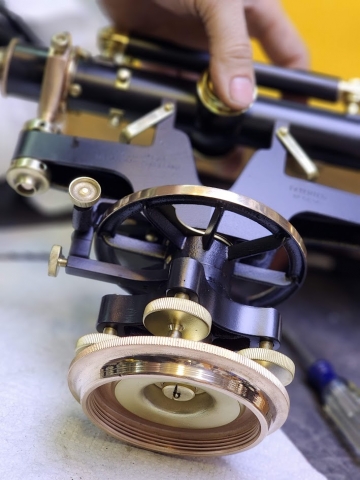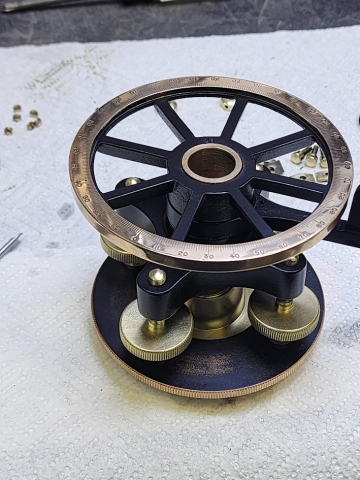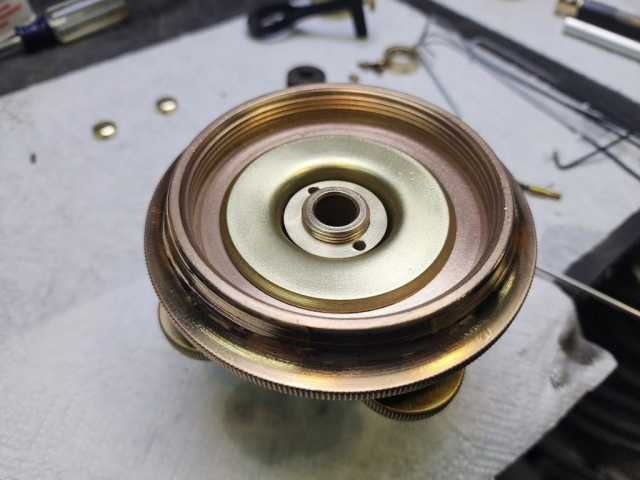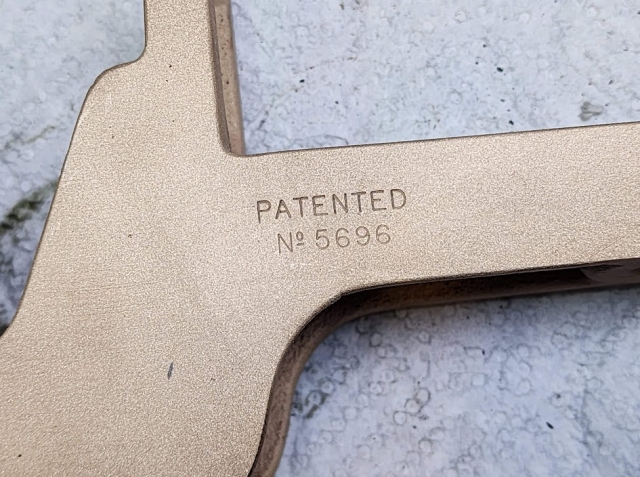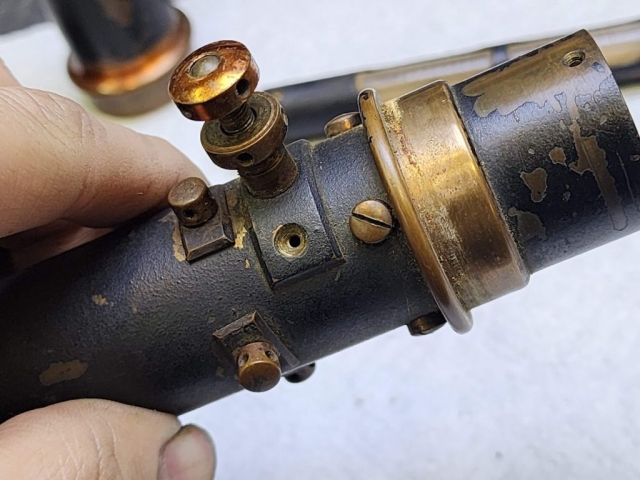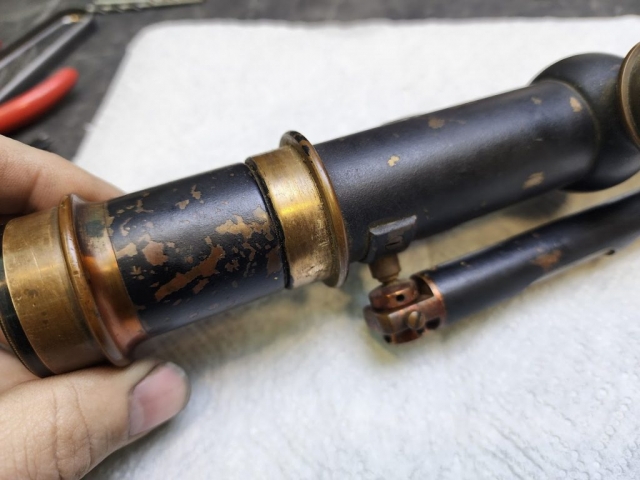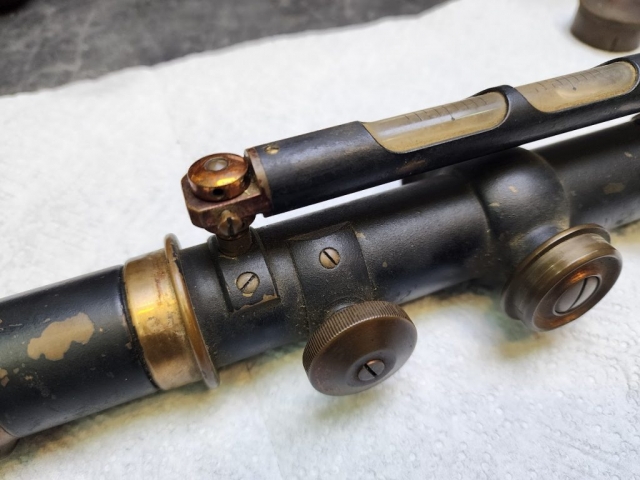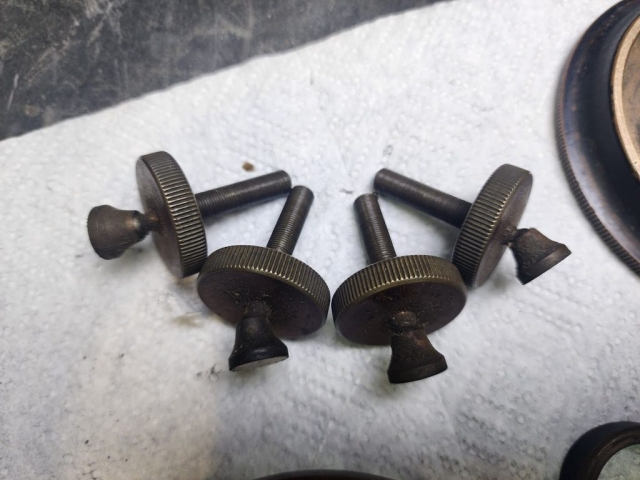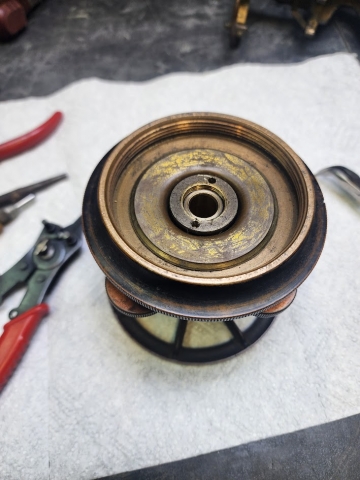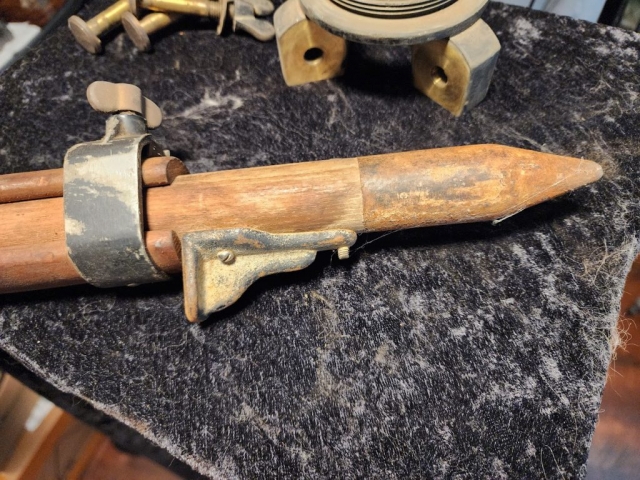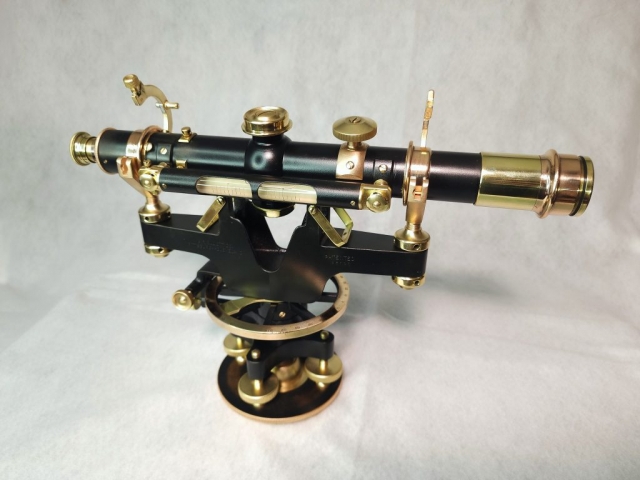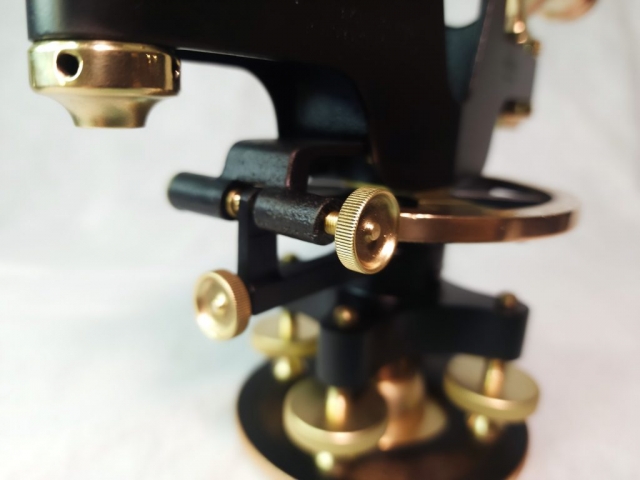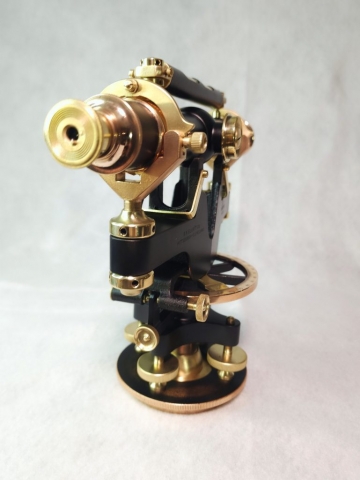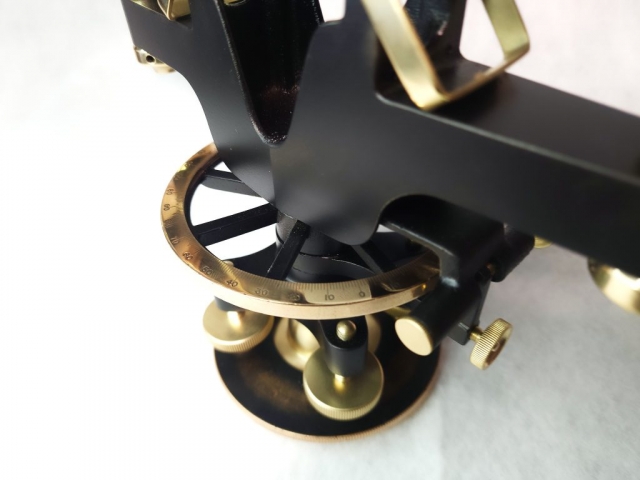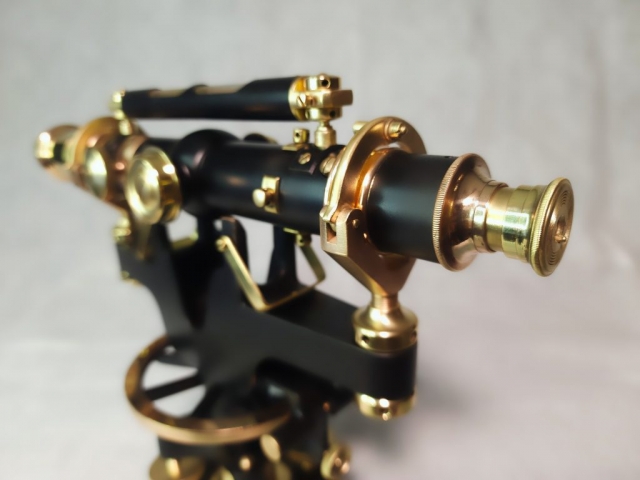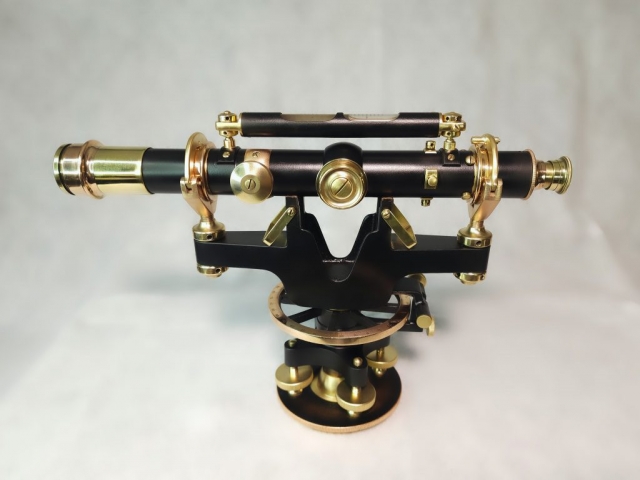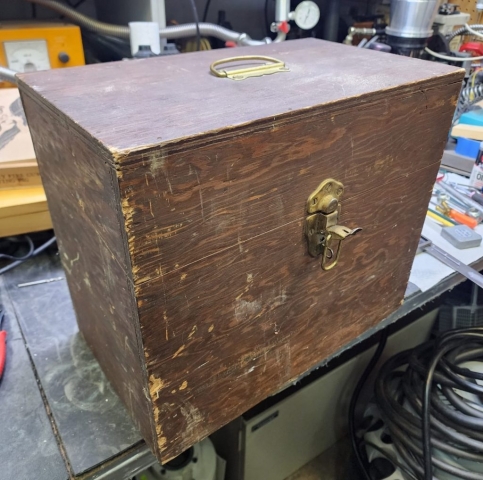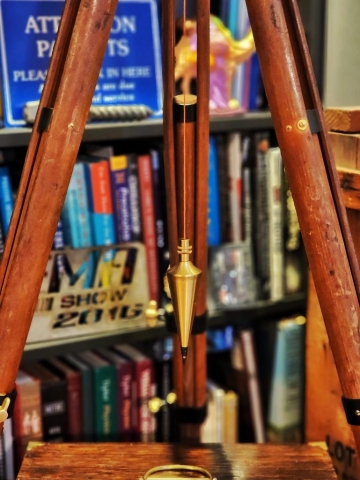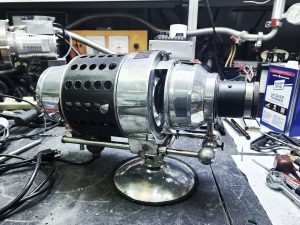The B.K. Elliott surveyor’s transit is a fascinating piece of engineering from the early 20th century. Built around 1910, this particular model is a rare convertible design, capable of switching between two modes: a locked-to-level mode for precise horizontal measurements and a movable pivot mode for angled observations. This flexibility made it a versatile tool for surveyors working in varied terrains and projects, from mapping land boundaries to engineering structures.
B.K. Elliott, a Pittsburgh-based company, was known for producing high-quality scientific instruments during an era when precision was paramount. The convertible transit is a testament to their commitment to innovation, offering surveyors a tool that could adapt to complex tasks in a time before electronic devices.
When I acquired this transit, it was a shadow of its former self—aged brass dulled by oxidation, mechanisms stiff from neglect, and its historical charm buried under years of grime. The restoration process was both a challenge and a joy. I carefully disassembled the instrument, cleaned the intricate parts, and polished the brass until it gleamed like it did over a century ago. The level vial and pivot mechanisms were meticulously adjusted to restore their functionality, and the instrument was calibrated to ensure it could still deliver accurate readings.
Holding this B.K. Elliott convertible transit today is like holding a piece of surveying history. It’s a reminder of how ingenuity and craftsmanship paved the way for modern tools, enabling professionals to measure, map, and build with precision.
Whether on display or in use, this 1910 B.K. Elliott transit is a bridge to a time when every calculation was made by hand and every tool was built to last. Restoring it has ensured that its legacy—and its story—can continue to inspire future generations of makers, engineers, and history enthusiasts alike.
With that all said, the entire unit has been replaced with a single modern laser level! My how times have changed.
Here is what it looked like when I picked it up from a dark damp dusty garage from an estate sale in the middle of nowhere. It was a hard choice, to either leave the patina, or go with a full restoration.
Next I tore down both the tripod, and the transit, to every single part, for cleaning, polishing, and painting. This was a few weeks of solid work!
It was hard not leaving it with the Brass and Bronze look, but wanted to be authentic to the original designers, so painted the Bronze parts black as intended.
Here is a Video from before the restoration.
And here is it all finished! Wow! Did it turn out incredable.
And a video explaining everything.
Now that I had it all completed, it needed something…
It needed a box for transport! For these always had a nice wooden transport box, for all the bit and ‘bob’s needed for operation.. more on that pun later ha!
My late step Grandfather was a civil engineer, and had this old box he used to keep all his survey gear in.
So I took the box, and removed all the old hardware, and set out to sanding it all down and patching all the nicks and chunks from years of use.
I cut White oak blocks to make mounts for the transit, and it looks like it has always been there! Now to prep and stain it, plus some new hardware is in order!
Here is a video that goes into detail.
Now to place everything into the box, and mount the plum-bob from the center of the transit, like it would have been used. The Plumb-bob was also from my late step grandfather. I love how this all looks as a complete setup now!
Item of NOTE: I know almost nothing about surveying and the tools, so if I have anything incorrect in here, please correct me below in the comments. I would love to know more!












